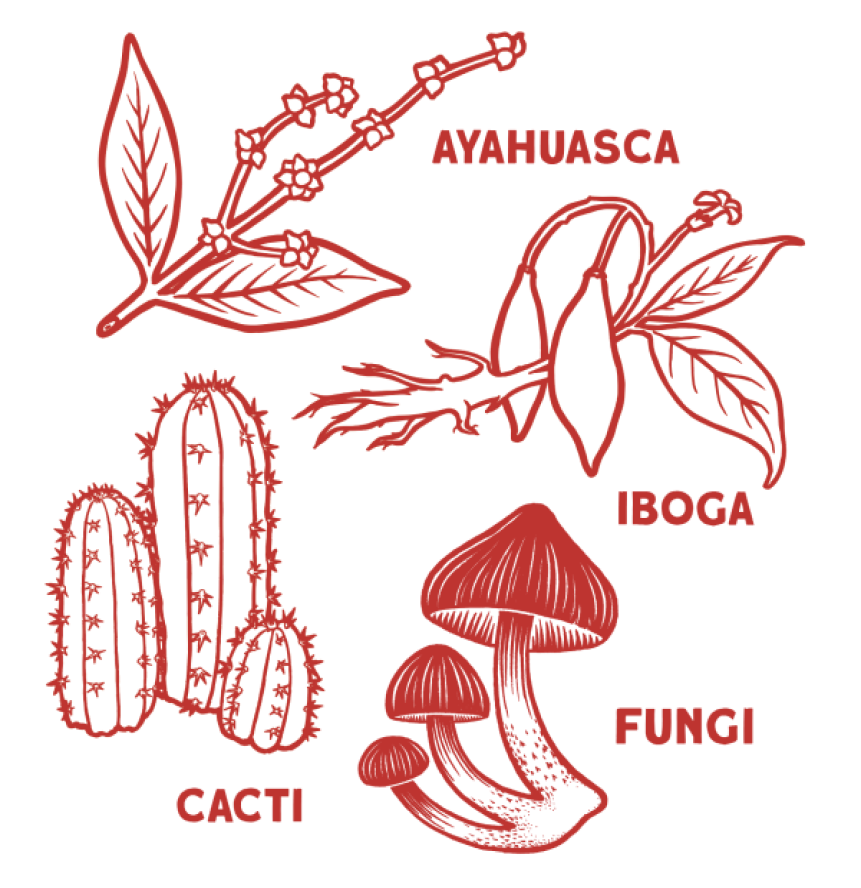As the leading name in the natural healing community; iboga vs ayahuasca strives to support you on your path to physical and spiritual healing. Since our founding, we have distributed high-quality products to thousands of customers around the world. And as you shop with us, you can rest assured that you are using only 100 percent natural substances that will have a positive impact on your health.
Both ibogaine and ayahuasca are medicines; but ibogaine is unique because of its ability to interrupt opioid withdrawal and catalyze specific neurotransmitters that support dopamine receptors’ health. Some of the compounds found in ayahuasca also support nerve growth; but ibogaine is the only known natural compound that catalyzes the release of GDNF; a neurotrophic factor responsible for the survival of neurons and promoting neuroplasticity. There is a great need for clinical research in this regard, but currently, clinical trials are rather limited.
Is Ibogaine a Plant Medicine? iboga vs ayahuasca
Ibogaine is a plant medicine which has been use for thousands of years by indigenous people of the Amazon rainforest to cure everything from chronic depression to drug addiction. However, there has been a lot of controversy surrounding Ibogaine and its purported use as a psychotropic.
For generations, shamans in Africa have used plant medicines to heal the sick, the dying, and the suffering. But in the 1960s, Western scientists rediscovered the healing power of these exotic plants; and found that Ibogaine and other hallucinogens can safely, rapidly, and effectively treat opioid and alcohol addiction.

Used at ibogaine treatment centers, ibogaine HCl is most often produced from the Voacanga africana tree but may also come from the Tabernanthe iboga shrub, which is a legally protected cultural sacrament in Gabon. Ibogaine is most concentrated in the iboga plant, but this perennial shrub grows slowly and is currently an unsustainable source. Most ibogaine providers use ibogaine sourced from the alternative Voacanga africana, which grows in abundance and in many climates.
While ibogaine does not have a traditional history of use in this extracted form, the Tabernanthe iboga plant of Gabon produces the ibogaine molecule in lower potency within its root bark — along with other alkaloids that may provide some healing properties. Tabernanthe iboga has been use in spiritual cosmology, ceremony, and rituals for millennia.
What is the Difference Between an Ayahuasca and Ibogaine
Ibogaine is most concentrated in the Tabernanthe iboga plant, a sacred and slow-growing shrub native to West Africa that is facing extinction. The compound is also naturally occurring in 5 other plants, most notably Voacanga africana and Tabernaemontana undulata, but these plants are not central to a spiritual belief system in the way iboga is.
Contrasting ayahuasca’s lengthy preparation, iboga does not require hours of processing with additional plants. Instead, the roots may be chewed alone — or more likely processed into a powder or extract to be used in ceremonies.
Much like ayahuasca, iboga is traditionally prepared with ritual intention within a community. For the many practitioners of the Bwiti spiritual discipline; to administer ibogaine outside of a ceremonial container is to deny the Seeker the entire teaching of iboga and to disrespect the cultures of Bwiti. Unlike ayahuasca, there are no religious protections in the U.S. for its use, and ibogaine remains illegal.
What Cultures Use Ibogaine?
Due to the protected status and cultural heritage of iboga; sourcing should be a point of conversation among providers and patients. Recall that ibogaine is a molecule, not a plant. The iboga plant contains the highest concentration of ibogaine and is still being used medicinally and spiritually — but because of poaching and overharvesting; the Bwiti practitioners are having problems sourcing their sacrament.
Stewarded by Pygmy tribes indigenous to the region for millennia; French colonists first observed iboga use toward the end of the 19th century. The psychoactive alkaloid was soon isolated and briefly marketed in Europe under the name “Lambarene” as a mental and physical stimulant to alleviate depressive symptoms.
There are many plants that are psychoactive in nature. Some can be use as plant medicines while others have destructive qualities. Iboga has been shown to have great medicinal qualities when use in the correct doses. Ibogaine can also be found to have a calming effect in some patients. However, for some, ibogaine is simply a hallucinogen and should not be used under any circumstances


lucky pari на ios https://www.luckypari101.ru
Today, many people are discussing ways to increase efficiency in various areas of life, whether it’s work processes, creative pursuits, or organizing free time. We come across a lot of opinions on the forums, share our experiences and learn from others. Such interaction broadens horizons, allows you to look at familiar tasks from a different perspective and discover unexpected solutions to complex issues. It is important to remember that the key to success does not always lie in complex tools or unique techniques, often the basic things that surround us on a daily basis are more important.
A fresh look at familiar processes often begins with a change in the environment or an awareness of the importance of comfort. The organization of the workspace is another factor that is often ignored. But if you pay attention to it, choose ergonomic, modern office furniture, you can significantly increase your productivity, improve concentration and even set yourself up for creativity. Such changes can be a small but very noticeable step towards new successes and personal development.
Customs clearance services for cars shipped from China to Russia (Vladivostok, Nakhodka, Vrangel bay, Kraskino, Grodekovo, PGT Pogranichny, Ussuriysk) for your buyer. We will help you deliver your car to any city in Russia! Professional services of a customs broker
https://clck.ru/3PFwUb
Tel: +79644340397 (WhatsApp, WeChat, Telegram, VK)
WeChat ID: bosomykindenis
Email: [email protected]